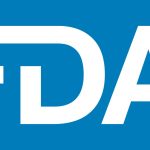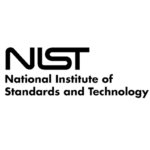Precision is one of the most essential equipment qualities for consistency and authenticity in experimentation. The Internet of Things (IoT) promises to enhance the accuracy of the health and pharmaceutical sectors while integrating smaller, more user-friendly devices. Thanks to its many advantages, IoT is poised to be the next trend in medical innovation and diagnostics.
The Current State of IoT Laboratory Equipment
Current lab equipment is limited by its propensity for systematic and random error caused by the environment, software, parameters or the device itself. Traditionally, human error is the worst offender in disrupting experiment quality. These issues manifest as an inability to use precision tech or failure to adhere to medical compliance. Techs may incorrectly import records into computers, and handwritten notes can be impossible to parse, layering complications. Conversely, an IoT-enabled robot that handles delicate tools, such as burettes and pipettes, can legibly notate its findings while staff verifies consistency and validity.
IoT can also alert users to sample concerns. Consider potential errors in histology: Wrinkled samples or an incorrectly set up tissue flotation bath may result in misleading information that delays development and detracts from patient care. IoT laboratory equipment can alert users to inadequate samples, record all necessary data points and aid in prognoses while shrinking the window for error. The immediate connectivity ensures timely entry of the most critical research points. Interoperability grows if the lab IoT integrates with additional assets, such as big data and machine learning, which could learn lab behaviors while suggesting regular precision equipment calibrations and alerting medical staff when anomalies arise from trained algorithms. It is estimated that IoT’s value in health care could catapult to $305.55 billion by 2032, demonstrating how much the sector believes it will strengthen operational efficiency.
Benefiting From Lab IoT Integration
IoT can forge a more reliable and productive workflow for precision medical laboratories in particular. And advantages extend beyond cost savings. Following are some of the additional benefits labs can reap.
Making Precision Tech More Precise. From scales to spectrometers, every precision lab device can be enhanced through IoT connectivity. Because the IoT equipment knows the lab’s standards for operational efficiency, it adjusts parameters when it does not meet specific metrics.
For example, IoT sensors alert staff when refrigerators storing sensitive samples are not maintaining temperature as they should, salvaging countless hours of labor. If the industrial water-cooled shakers do not reach the vibration levels necessary for thorough mixing or temperature regulation, their intensity adjusts.
Saving Time on Repeated Testing and Data Entry. The time savings are notable as data entry automates. This lets healthcare experts spend more hours on development and experimentation instead of worrying about tedious data cleaning and other administrative tasks. It gives staff more agency to dedicate time to high-value projects requiring a human touch, while the IoT regulates repeat operations. Human error often occurs in cataloging information, and eliminating this area of concern increases data transparency and integrity.
Eliminating Bias and Expanding Breadth of Research. Eliminating bias is one of the most monumental advantages of connected precision lab equipment, permitting more precise diagnoses and recipes for novel drugs. Whereas some lab technicians may forget or intentionally redact certain information, IoT laboratory equipment will record all metrics it can about a patient or research subject, including:
- Gender
- Socioeconomic status
- Environmental factors
- Comorbidities
- Age
- Current drug use
- Genomics
Boosting Cybersecurity. IoT labs should consider integrating other next-generation integrations for data-gathering and secure storage. For example, medical laboratories are safer and more dependable if they connect IoT data to cloud infrastructure and reliable backup systems.
The vast amounts of sensitive medical knowledge and information are prime targets for cybercriminals. Cloud-connected IoT devices offer a seamless way to both collect and protect this data behind compliant defenses.
Current Applications of the IoT in Healthcare Sectors
Most discussions about the IoT in precision labs relate to R&D, but current applications highlight how the technology’s short tenure in health care has already caused profound improvements.
Medical Device Industry. Labs look to the future but must also monitor patients in the present. Precision medical devices including aspirators and flowmeters must read and test reliably. Automating oversight allows staff to be more proactive in administering treatments and therapies. Patient monitoring may also happen remotely while diving deeper into health metrics than conventional devices. The monitoring of personalized data is reducing time spent in care while expediting recovery.
Digital Health and Pharma. Medical data in health care is notoriously siloed and incomprehensive, slowing drug discovery and attentive care. Precision lab equipment that can tabulate even the most minute measurements enlightens medical experts on lucrative avenues to pursue, regardless of demographics.
Clinical trials are becoming more targeted, as IoT devices align participants to the most likely treatment for success while determining the probability of a drug’s efficacy. Because data-gathering is less biased than manual recording, care is also more considerate. This is also allowing researchers to develop more curated solutions for individual cases.
Diagnostic and Regulatory Compliance. Executing preventive maintenance and calibrating precision tech regularly is crucial for quality lab performance and efficiency. IoT labs leverage real-time insights for more informed equipment monitoring. Combine this with functionalities like predictive analytics, and cost-efficiency skyrockets from reduced downtime and unnecessary maintenance. When reporting data to auditors to verify framework compliance, it is compiled neatly into a dashboard with high visibility.
The data-driven power behind IoT laboratory equipment will expedite R&D, amplify patient quality of care, and make performance more consistent. Investment in these technologies ultimately creates more profitable and productive lab settings, fueling healthcare innovation and faster time to market.






